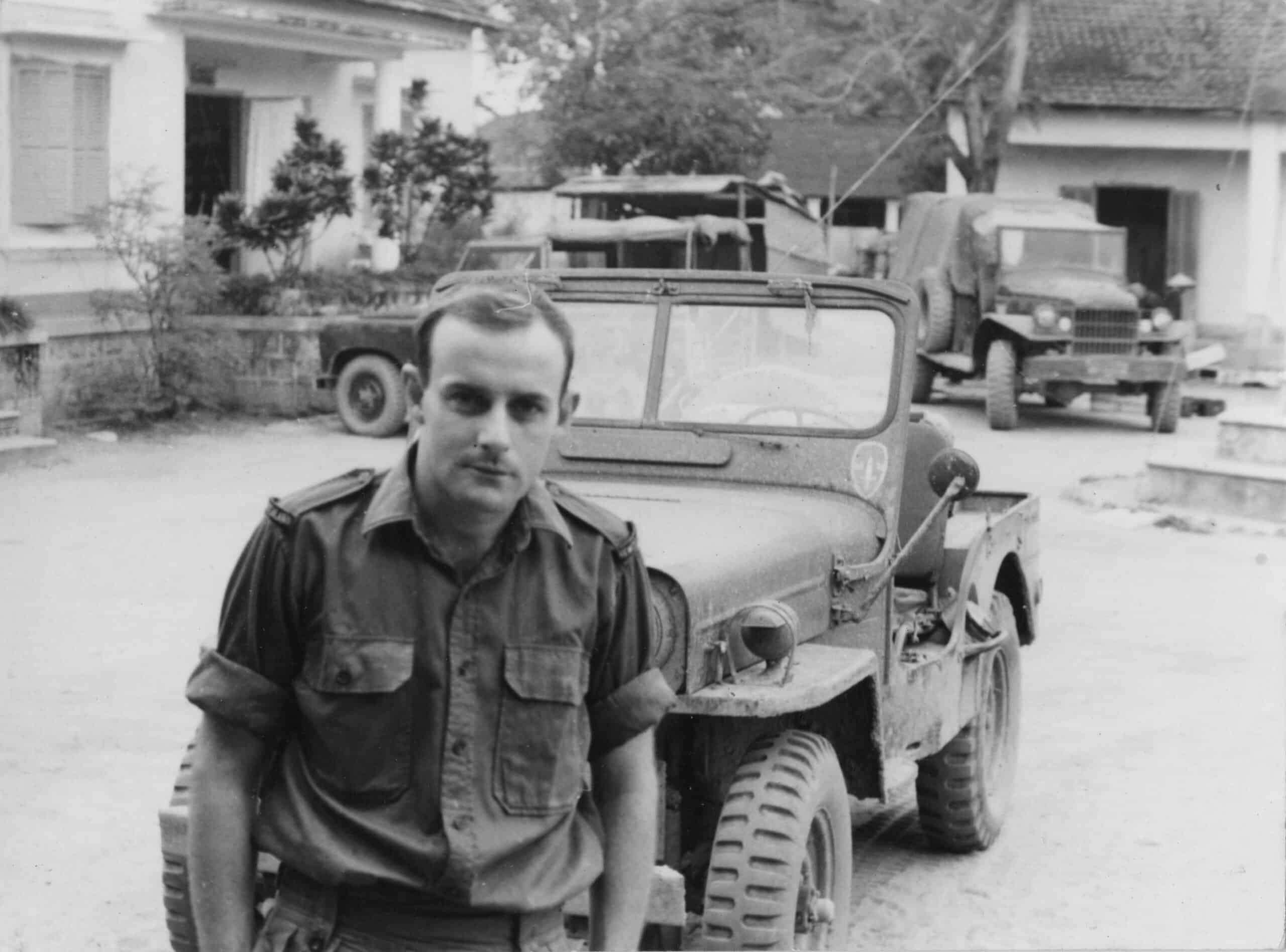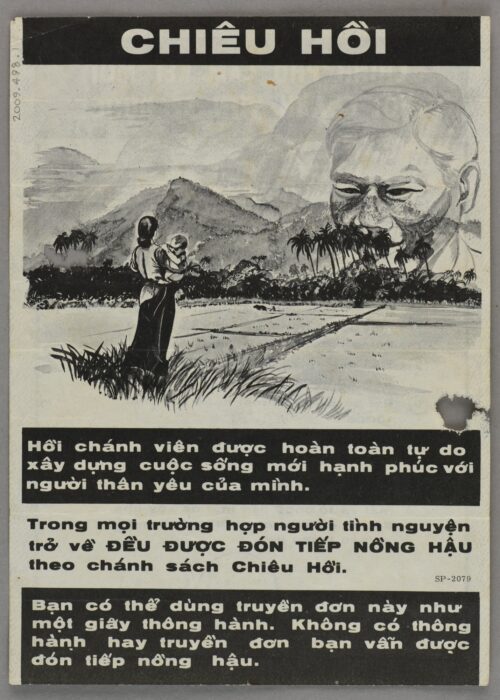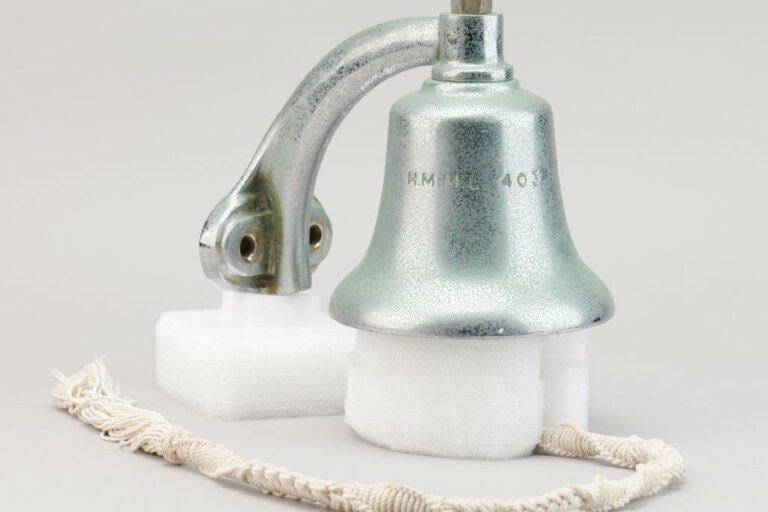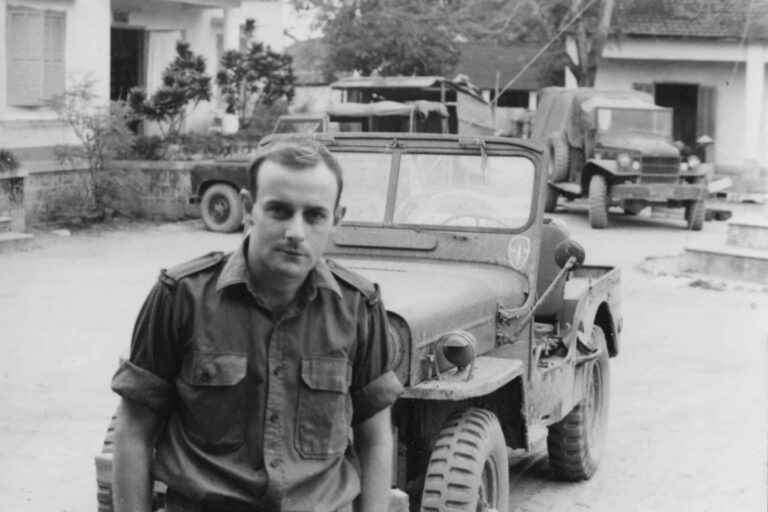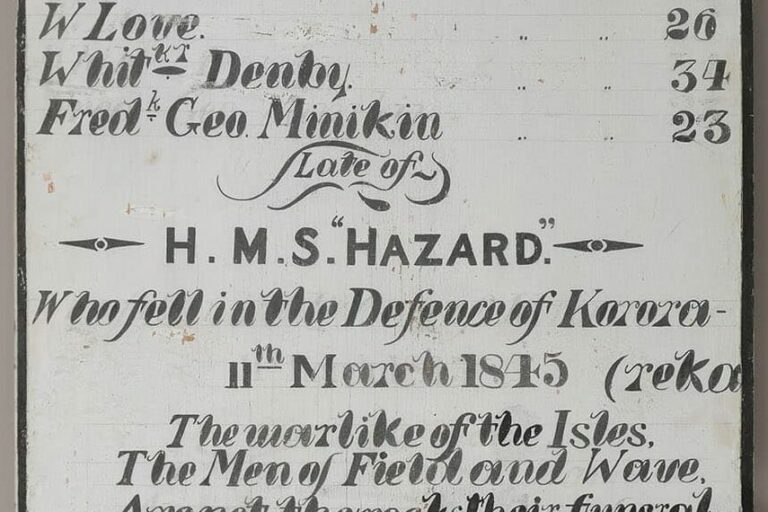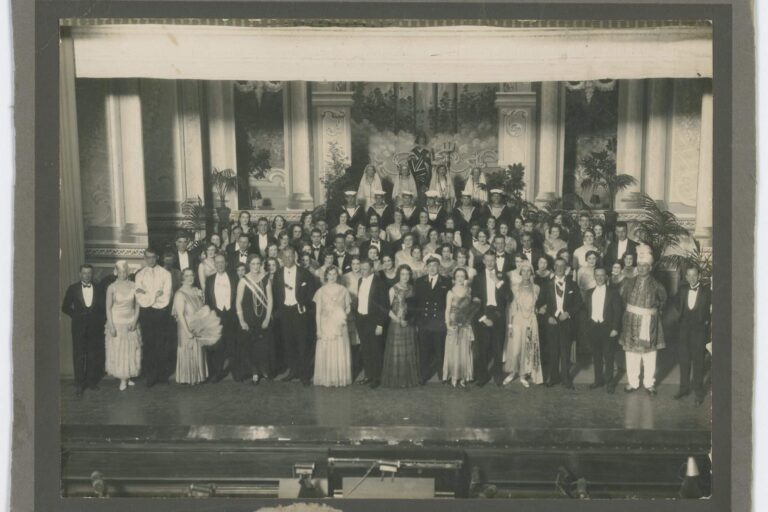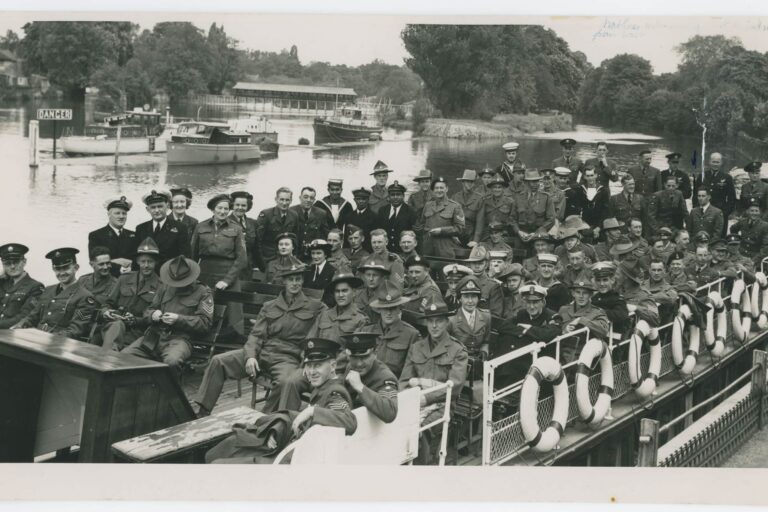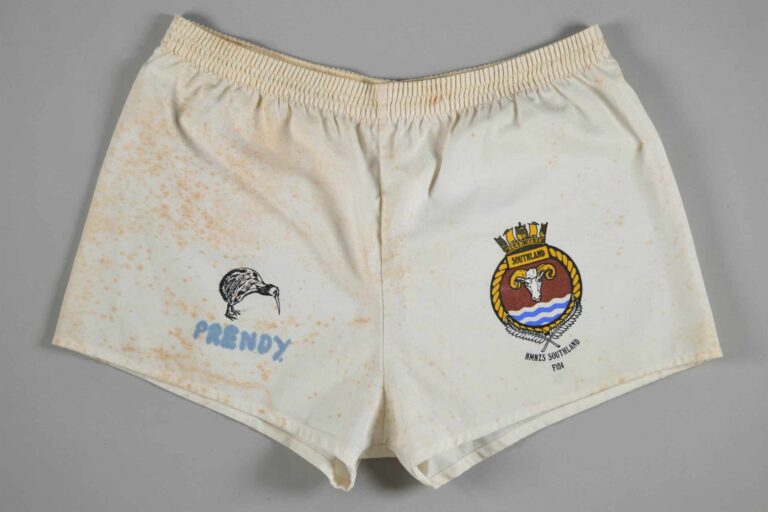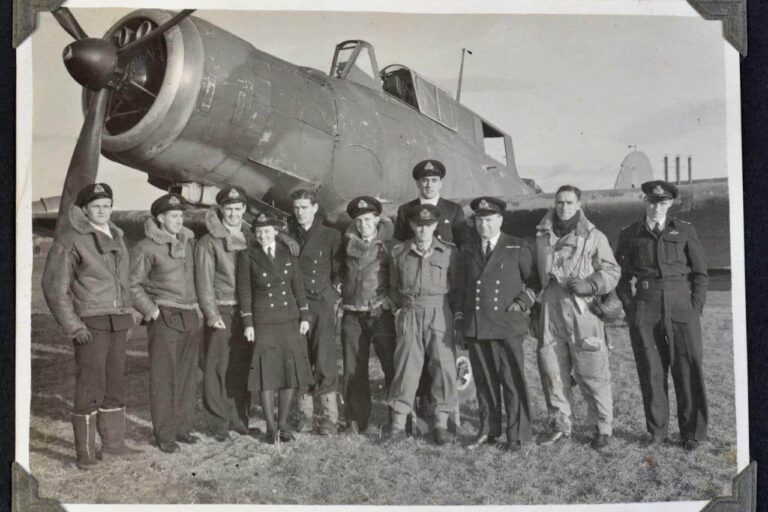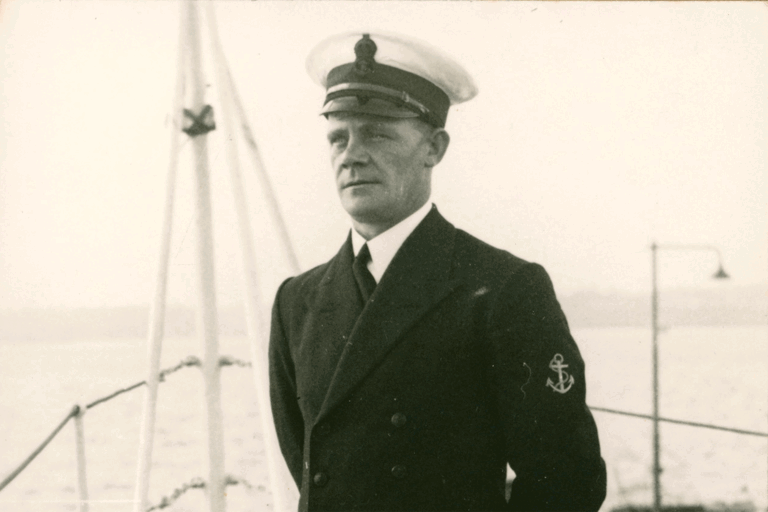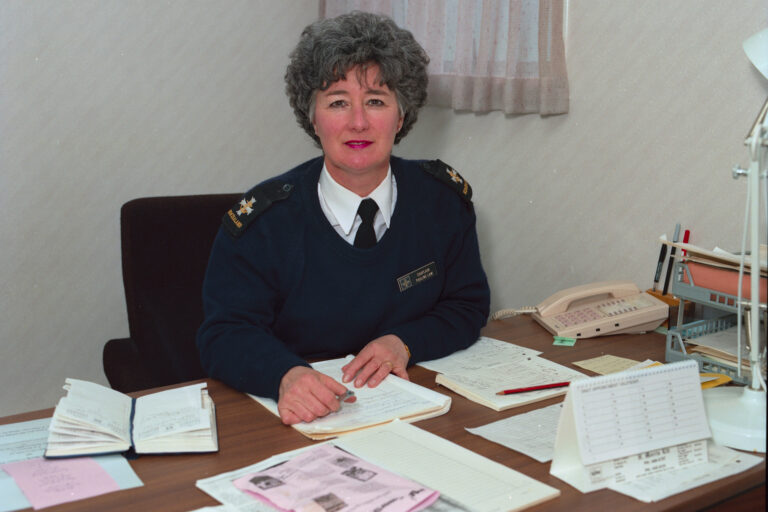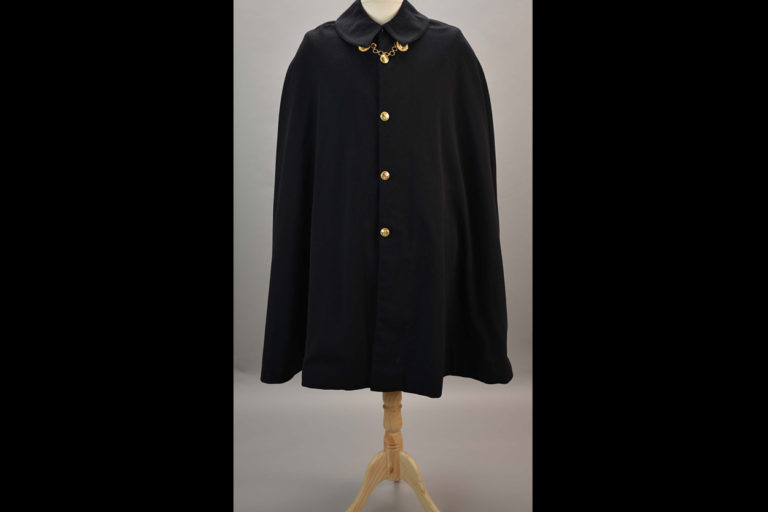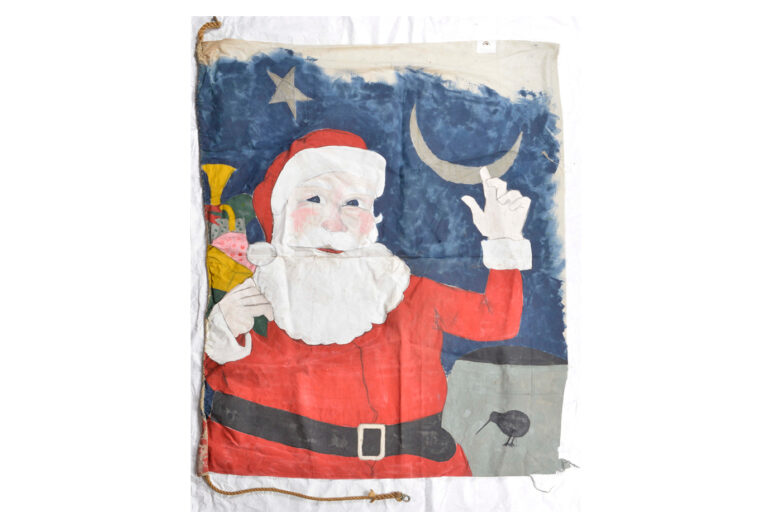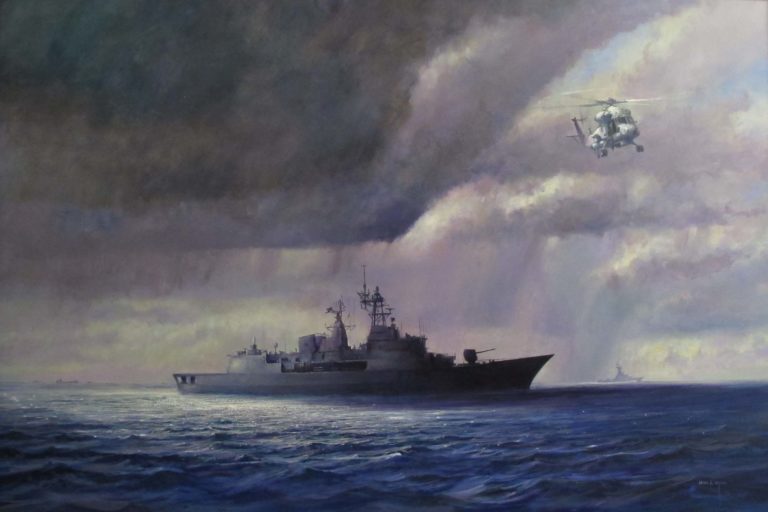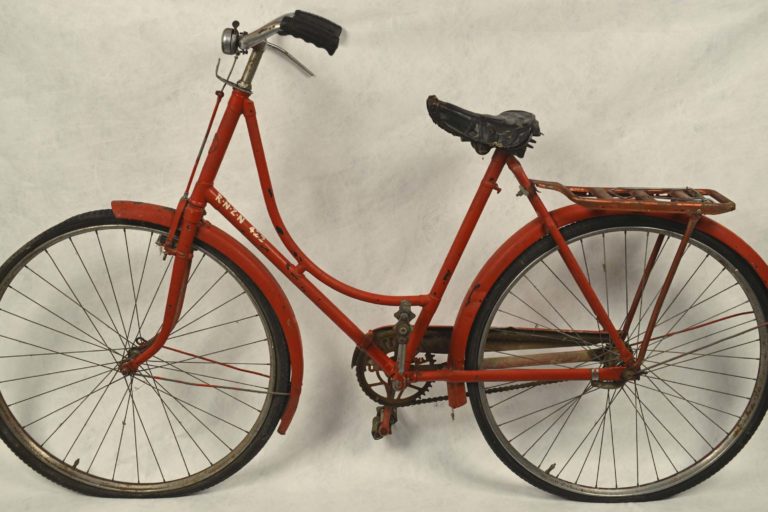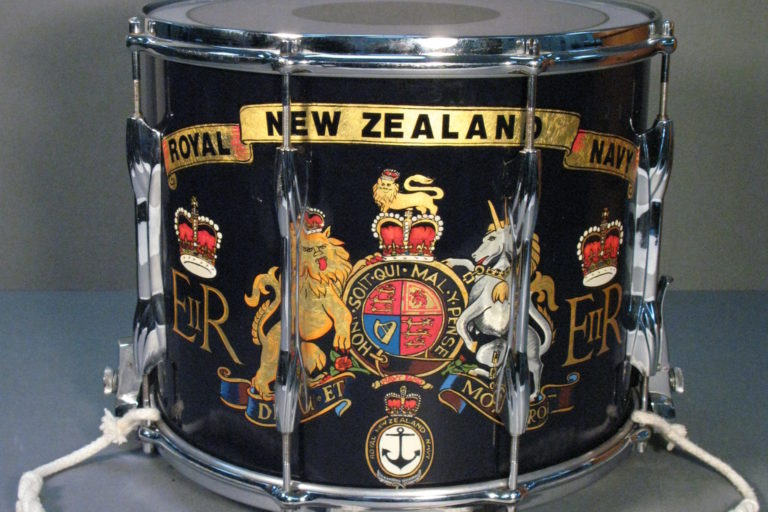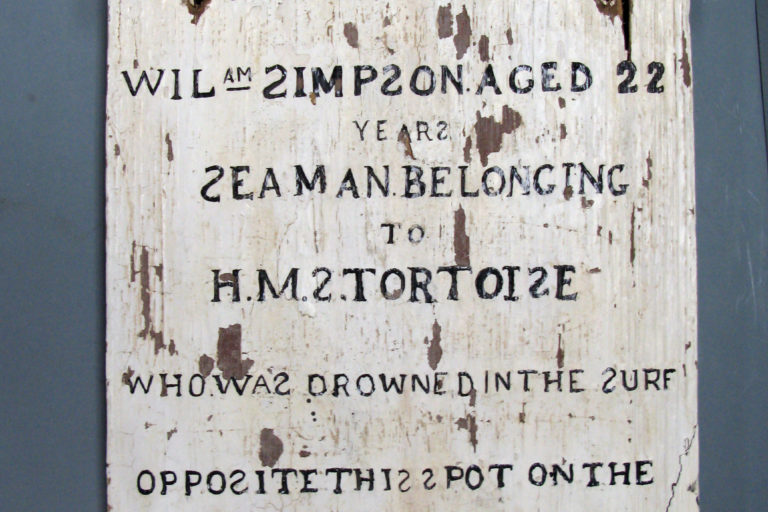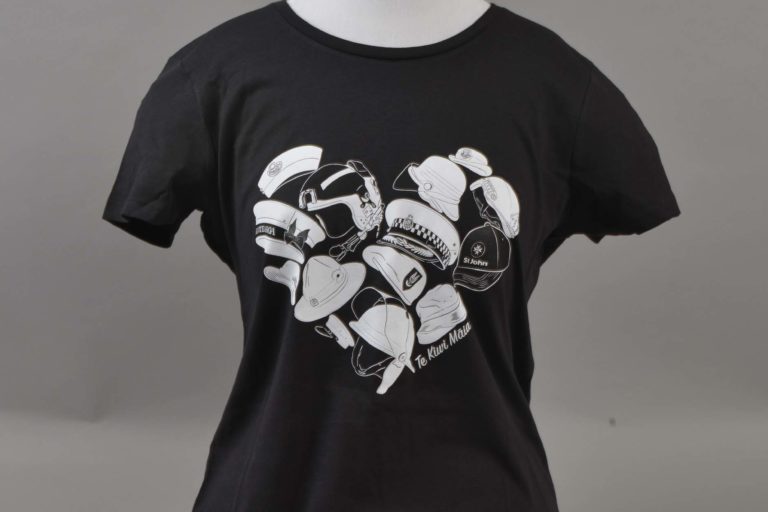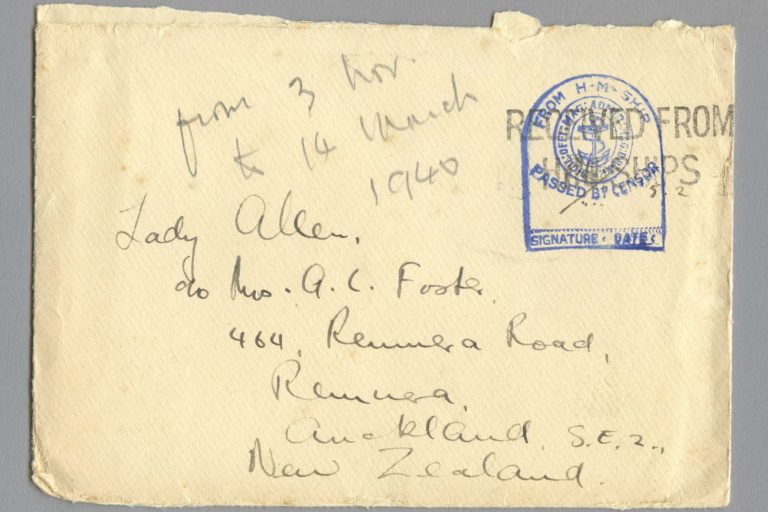The Vietnam War followed the French Indochina War of 1946-1954 which saw Vietnam divided into two states. A northern communist state backed by China and the Soviet Union, and a southern, strongly anti-communist, regime which was supported by the United States.
In 1965 the US sent troops to reinforce the southern regime which was on the brink of collapse. New Zealand, obligated by a commitment to the ANZUS Treaty (Australia, New Zealand, United States Security), reluctantly sent combat troops later that same year. Between 1967 and 1971 a New Zealand Services’ Medical Team was also sent to Vietnam as part of a Military Public Health Programme for civilians. This group comprised of a total of 98 personnel from the three-armed forces and included 24 men from the Navy. They set up base at Bong Son, in the Binh Dinh province in South Vietnam, but subsequently were split into sectors within various townships.
Cecil Cameron Medical Chief Petty Officer served in the medical team in 1967. During his service he collected two Southern Vietnamese propaganda leaflets which were then donated to the Navy Museum in 2009, along with other items from his personal collection. These two leaflets were produced as part of a programme called Chieu Hoi (referred to as ‘In open arms’ in English) by the government of South Vietnam and the United States from 1963 to 1971. The programme was intended to target Viet Cong fighters and encourage them to defect from the communist side. Defecting fighters were especially useful because they could provide tactical insight and intelligence about an elusive enemy who was utilising guerrilla warfare. The programme was most effective in converting soldiers lower down the military and political ranks, who were generally more driven by economic reasons rather than ideology. Millions of pamphlets were dropped over South Vietnam, Cambodia and Laos during the war. Nearly 800 different types of leaflets were designed, of these 367 promoted the agenda of the Chieu Hoi Programme.
Lindsay Grenfell served in the New Zealand Services Medical Team based at Bong Son as a Medical Petty Officer from 1968-1969. He remembers seeing Chieu Hoi leaflets when living with the US Army MACV Team, at his lodging which was about a kilometre away from the team’s workplace. The New Zealand Navy medics stayed there for a short time until construction on ‘NZ House’, which was adjacent to the hospital, was completed. After hearing mention of Chieu Hoi, Grenfell queried a US Army officer who explained the programme. He also learnt of Hanoi Hannah, a form of North-Vietnamese propaganda, which involved a Vietnamese woman broadcasting persuasive messages in fluent English. Grenfell recalls when some of the American 173rd Airborne Brigade came to visit the hospital. They were accompanied by a Vietnamese man who had defected and was referred to as a Kit Carson Scout, with local Vietnamese staff describing him as “Chieu Hoi”. The Kit Carson Scout programme, established in 1966, was named after Christopher “Kit” Carson, a famous American frontier survivalist who lived from 1809 until 1868. The programme effectively employed Viet Cong defectors – such as those persuaded by the Chieu Hoi propaganda – as scouts within the US military forces.
2009.498.1
This leaflet depicts a woman standing in a field holding a baby with a large ghostly face of a man looking down upon them – presumably representing the Viet Cong fighters who are separated from their families. The leaflet actively promotes the idea that voluntary defectors will be warmly welcomed by the South Vietnamese Government, promising that they will be able to rebuild their lives and reconnect with loved ones. The translation reads as follows:
CHIÊU HỒI
- Hồi chánh viên được hoàn toàn tự do xây dựng cuộc sống mới hạnh phúc với người thân yêu của mình.
- Trong mọi trường hợp người tình nguyện trở về ĐỀU ĐƯỢC ĐÓN TIẾP NỒNG HẬU theo chánh sách Chiêu Hồi
- Bạn có thể dùng truyền đơn này như một giấy thông hành. Không có thông hành hay truyền đơn bạn vẫn được đón tiếp nồng hậu.
DEFECTORS
- Defectors are entirely free to build new and happy lives with their loved ones.
- In all cases, voluntary defectors will be WARMLY WELCOMED according to the Defection policies.
- You can use this leaflet as a travel document. Without a travel pass or leaflet, you will still be warmly welcomed.
This leaflet depicts a woman in tears thinking about a Vietnamese soldier who lies dead on the ground.
The message mourns the dead and blames the Communist forces for the destruction of families.
The translation reads:
- Khóc thương kẻ chết, người đi.
- Gia đình tan nát cũng vì Cộng nô
- Đắng cay, mòn mỏi đợi chờ,
- Mẹ già, con dại bao giờ gặp anh?
- Weep for the dead, the departed.
- The family was torn apart because of Communist slavery.
- Bitter, languish.
- Elderly mother, innocent children when will we meet again?
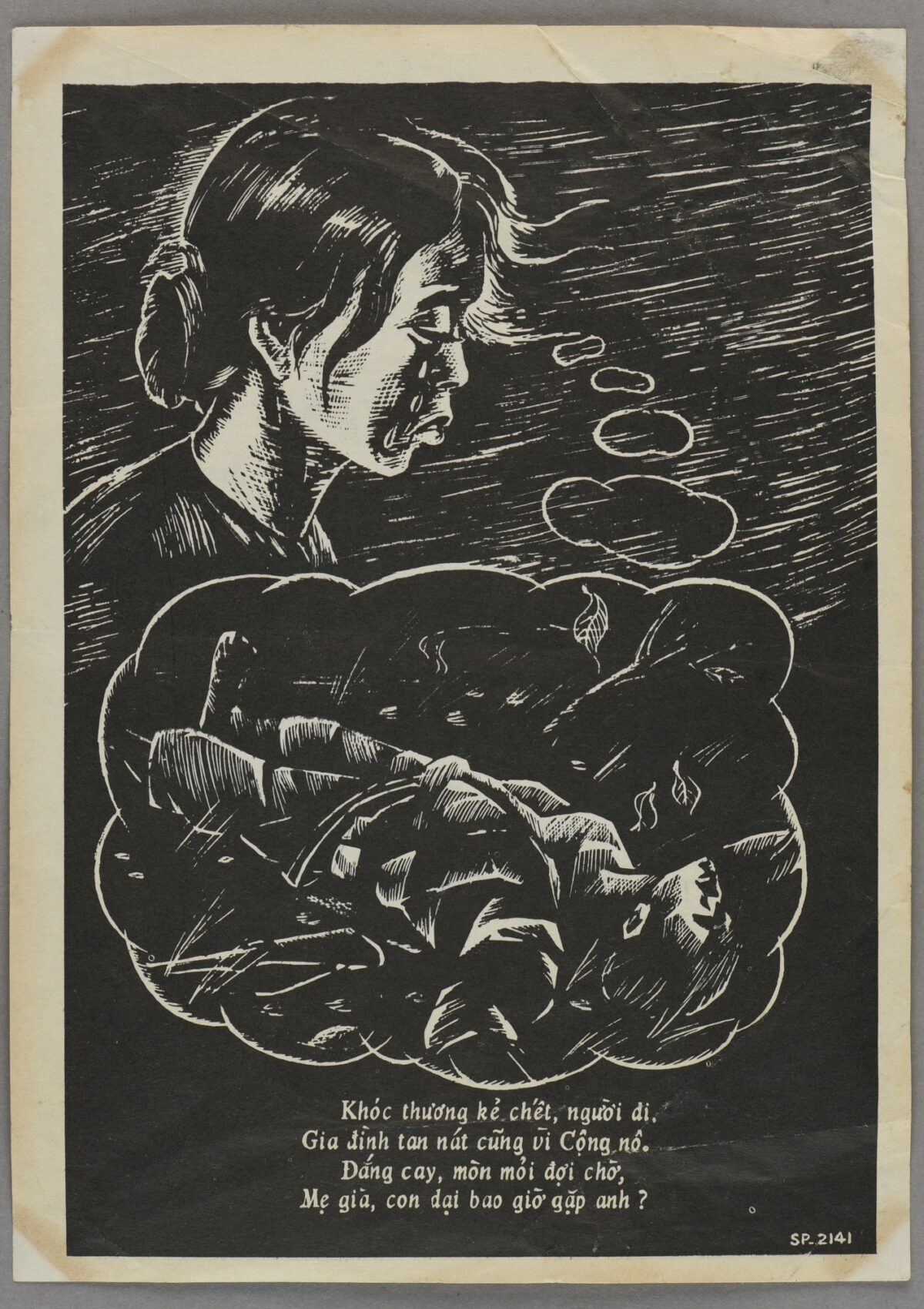
On the reverse of both leaflets the information is the same. The numbered list details the benefits that the South Vietnamese Government promised would be granted to Viet Cong fighters who switched sides. These benefits included: financial allowances, access to medical care and job assistance, the provision of materials and food, the promise of good treatment, and the ability to reunite with family and return home. The translation reads:
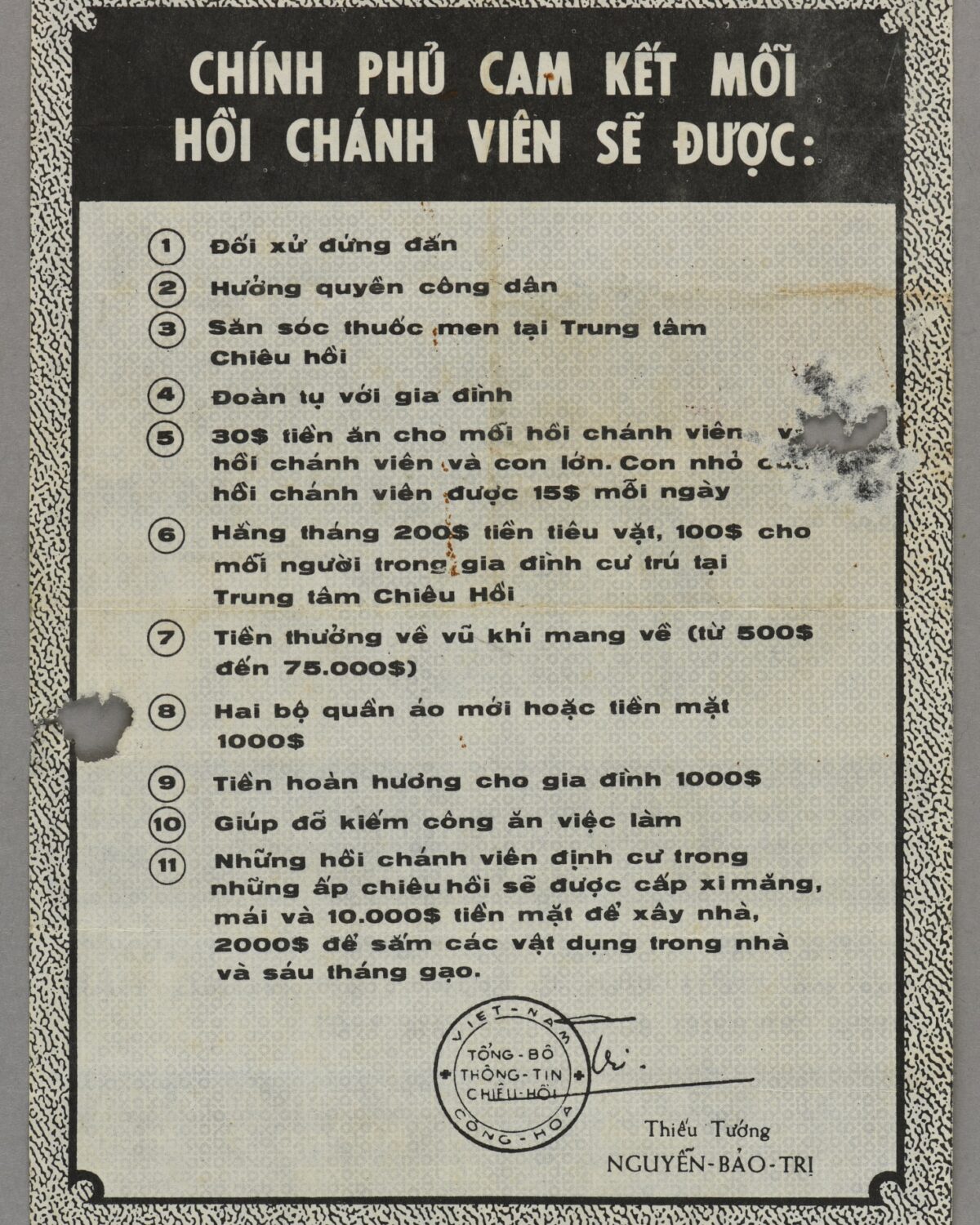
CHÍNH PHỦ CAM KẾT MỖI HỒI CHÁNH VIÊN SẼ ĐƯỢC:
- Đối xử đứng đắn
- Hưởng quyền công dân
- Săn sóc thuốc men tại Trung tâm Chiêu hồi
- Đoàn tụ với gia đình
- 30$ tiền ăn cho mỗi hồi chánh viên, vợ hồi chánh viên và con lớn. Con nhỏ của hồi chánh viên được 15$ mỗi ngày
- Hằng tháng 200$ tiền tiêu vặt, 100$ cho mỗi người trong gia đình cư trú tại Trung tâm Chiêu Hồi
- Tiền thưởng về vũ khí mang về từ (500$ đến 75.000$)
- Hai bộ quần áo mới giá trị 1000$
- Tiền hoàn hương cho gia đình 1000$
- Giúp đỡ kiếm công ăn việc làm
- Những hồi chánh viên định cư trong những ấp chiêu hồi sẽ được cấp xi măng, mái tôn và 10.000$ tiền mặt để xây nhà, 2000$ để sắm các vật đụng trong nhà và sáu tháng gạo.
THE GOVERNMENT GUARANTEES EACH DEFECTOR WILL BE ENTITLED TO:
- Proper treatments
- Citizenship rights
- Medical care in Defection Camps
- Reunion with their families
- $30 meal stipend for each defector, his wife and adult children. Young children of the defector get $15 per day.
- $200 monthly pocket money, $100 for each family member living in Defection Camps
- Bonuses for collected weapons range from ($500 to $75,000)
- Two new set of clothes worth $1000
- $1000 return home allowance for the family
- Support to find jobs.
- Defectors living in defection villages will be given cement, corrugated metal roofs and $10,000 in cash to build houses, $2,000 to buy household items and six months’ supply of rice.
Article by: Lewis Dunster, Collections Assistant
References:
[1] Tovy, Tal. “Learning from the Past for Present Counterinsurgency Conflicts: The Chieu Hoi Program as a Case Study.” Armed Forces & Society 38, no. 1 (2012): 142–63. https://www.jstor.org/stable/48609128. Pg. 143.
[2] Tovy, “Learning from the Past for Present Counterinsurgency”. Pg. 143.
[3] “Learning from the Past…” Pg. 147.
[4] “Learning from the Past…” Pg. 155.
[5] “Learning from the Past…” Pg. 155.
[6] North, Don. “The Mystery of Hanoi Hannah”, The New York Times. Published February 8, 2018. Accessed 12/10/2023. https://www.nytimes.com/2018/02/08/opinion/hanoi-hannah-vietnam-propaganda.html.
[7] Tovy, Tal. “From Foe to Friend: The Kit Carson Scout Program in the Vietnam War.” Armed Forces & Society 33, no. 1 (2006): 78–93. https://www.jstor.org/stable/48608754. Pg. 78.
[8] Tovy, Tal. “From Foe to Friend: The Kit Carson Scout Program in the Vietnam War.” Pg. 78.
[9] Translation provided courtesy of the University of Auckland.
Bibliography
Email conversation with Lindsay Grenfell, September 2023.
North, Don. “The Mystery of Hanoi Hannah”, The New York Times. Published February 8, 2018. Accessed 12/10/2023. https://www.nytimes.com/2018/02/08/opinion/hanoi-hannah-vietnam-propaganda.html.
Tovy, Tal. “From Foe to Friend: The Kit Carson Scout Program in the Vietnam War.” Armed Forces & Society 33, no. 1 (2006): 78–93.
https://www.jstor.org/stable/48608754.
Tovy, Tal. “Learning from the Past for Present Counterinsurgency
Conflicts: The Chieu Hoi Program as a Case Study.” Armed Forces & Society 38, no. 1 (2012): 142–63.


